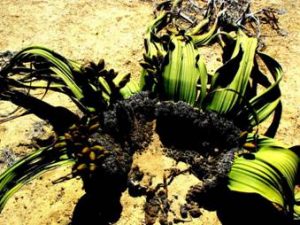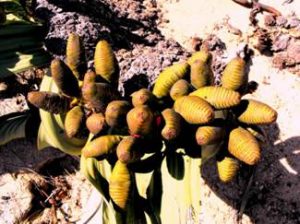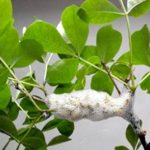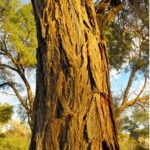TREE LIFE
June 2014
MASHONALAND CALENDAR
Sunday, 15th June (3rd Sunday): Visit to Pamuzinda Safari Lodge. This month the Tree Society is doing something a bit different. We are visiting Pamuzinda Safari Lodge near Selous. We will have our normal walk in the morning which we will organise ourselves. We have then made a special arrangement with Pamuzinda Safari Lodge to give us lunch followed by an activity of our choice. The activity could be a game drive or canoeing, etc.
The cost of this will be a bit higher than our normal outings at $30. However, we hope that enough people will be interested to make this worthwhile.
For planning and catering purposes could all those who wish to participate in this, please let Isla know on or before 8th June. Alternatively, members can send a message to the Tree Society email address: ztreesociety@gmail.com
Friday June 20th and Saturday 21st: the Aloe Society’s Xerophytica 2014 congress Details were given in the May Tree Life. Up-to-date information is available on the Society’s website: https://www.aloesocietyzim.com
Saturday 28th June (4th Saturday): Our fourth Saturday walk is a return visit to 25 Wavell Road, the home of Rhett Butler, where we expect to see some interesting indigenous trees and plants. We will meet at 2.30 p.m.
WELWITSCHIA MIRABILIS
J-P Félu recently visited Namibia and this month in place of the usual Tree of the Month he has prepared an article on the extraordinary species, Welwitschia mirabilis.
Family: Welwitschiaceae, order Welwitschiales, division Gnetophyta (this is a small division of gymnospermous flowering plants; some scientists see the gnetophyta as the link between perms).Common names: Welwitschia, tumboa (Angola), tweeblaarkanniedood (Afr.), !kharos (Nama/Damara), nyanka (Damara), khurub (Nama), onyanga (Herero).

A typical Welwitschia showing stem, leaves and female cones
Welwitschia must be one of the weirdest and ugliest plants on the planet. It only grows in Southern Angola and in the Northern part of the Namib Naukluft National Park in Namibia.
Should you want to see it prepare yourself for a journey of some 3 000 km and obtain a permit in Swakopmund to visit the Namib Naukluft NP.
So why so much fuss about this plant?

A typical Welwitschia showing stem, leaves and female cones
First this plant possibly dates from the Jurassic when the Gymnosperm ruled the botanical world (the Gymnosperm (naked seeds) are non-flowering plants (conifers, ferns and cycads) while the angiosperm (enveloped seeds) are the flowering plants now dominating the botanical field).
The oldest Welwitschia dated by Carbon 14 was 920 years but it is thought that big plants may be anything up to 1 500 to 2 000 years old.
The two leaves grow during the whole life of the plant and the living portion of the leaf can be some 4 meters long by 2 meters wide, the leaf area in a healthy specimen averages 1 square meter but can be much larger, leaves grow at the rate of 14 cm a year but this also is extremely variable.
The Welwitschia is composed of a stem, two leaves and roots and that is all. The apex of the stem dies early but the peripheral parts continue growing giving the stem its peculiar obconical shape. It grows two and only two leaves, they are never shed, and they carry on growing for centuries. The ends get frayed and tatty but it is still the same original two leaves. On the photograph you see the obconical stem in the centre, the dead apex covered with sand, the two leaves frayed and their ends dead.

Female cones
As gymnosperms go the plant is dioecious, males and females grow on separate plants. The male cones produce a little yellow flower that contains nectar, mostly the pollination of gymnosperms is done by the wind, not so in Welwitschia, the male flower attracts insects; a wasp is believed to be the main pollinating vector.
During the day the stomata on the leaves are open to absorb carbon dioxide while photosynthesizing. The transpiration through the stomata is nevertheless very high for a desert plant and an average-sized plant may require anything up to 2.5 litres of water a day. The plant possesses an intricate system of hair roots to maximise its water collection. Another peculiarity of the Welwitschia is the presence of proper xylem vessels like those of angiosperms.
Gymnosperms have a more rudimentary xylem system (the xylem of a plant is the system of tubes and transport cells that circulates water and dissolved minerals, gymnosperm only have tracheids). In times of water stress the plant switches to another mode of perspiration, closing its stomata by day and opening them at night. It is evident that, contrary to many other plants in that environment, the Welwitschia cannot rely solely on the fog to survive. It has been suggested that it can seek water down to 30 or 40 meters in the soil but the roots do not seem to go deeper than some 3 meters depth, how it get sufficient water is another mystery.
Sources: Welwitschia’s world – Joh R. Henschel, PlantzAfrica
Visit to Hippo Pools (… continued)
Friday, 28th February: Afternoon
To continue the report of our trip to Hippo Pools, on Friday afternoon after lunch and a couple of hours to relax in the shade of our verandahs we set off with Mark along a trail following the river upstream.
We started by looking at a Loranthus sp., a parasite growing on a large tree in the camp with yellow tubular flowers with orange tips. This is still to be named.
The riverine vegetation here is so lush after all the rain and we were amazed at the size of the trees. Piliostigma thonningii is a dominant species and some trees are large. It has white unisexual flowers which are born on different trees (dioecious). We were interested to find many more trees with male flowers than female flowers.
Phyllanthus engleri, the Spurred Phyllanthus, has very distinct spurred branches simple leaves and occurs in tropical Africa. The root bark is very toxic.
Artabotrys brachypetalus, the Purple hook berry, is an impressive liana looping round the trees, very much a feature of this vegetation.
Cassia abbreviata, the Sjambok pod cassia, grows large here with very long pods.
We saw several Acacias, now named Senegalia.
Senegalia schweinfurthii is the River climbing acacia with scattered hooked spines which arise from darkish brown vertical ribs.
We also saw Senegalia galpinii and Vachellia sieberiana, which can be identified by the sharp tip at the end of the leaf; the pods are eaten by stock but the green fruit and leaves have been found to contain Prussic acid.
Senegalia polyacantha has hooked thorns and a large number of leaflets.
Vachellia tortilis was seen (labelled as Acacia tortilis) but the tree is so tall and the canopy of leaves so high above the ground that even with Tony’s long hook we could not verify if it was S. tortilis.
Adenia sp. (Passion flower family) a creeper with large indented leaves and two large glands at the base of the leaf. Some of the leaves have become modified to form tendrils.
Xeroderris stuhlmannii a legume which has a distinctive winged pod and large compound leaves with 15 alternate to sub-opposite leaflets.
Then we came across Garcinia livingstonei. If you fold the leaves in half they crackle the bark is grey to dark grey and exudes a yellow sap. It has a distinctive habit of being stiff with rigid branches in threes growing at an acute angle.
Opilia amentacea, a liana has a rough bark brittle leaves and spectacular flowers. Known as the Shaggy star.
Acalypha chirindica has male and female flowers on the same plant. It is a small shrub and if you hold the leaves up to the light, glands are visible.
Cissus integrifolia, a liana which was in fruit.
Carissa edulis, this has simple spines.
Millettia usaramensis, a small tree with mauve to purple pea-shaped flowers in loose sprays.
Margaritaria discoidea is a medium tree at Hippo Pools. It is dioecious, the berries are born under the flat leaves and the fruit is a 3-lobed capsule . It belongs to the family Euphorbiaceae.
Phoenix reclinata, the wild date palm, was evident in the more open grassland.
The undergrowth was lush and included the Shamva Canna with ribbed leaves and a dominant grass species which Mark is going to identify.
Ann Sinclair
Saturday, 1st March
On Saturday morning we walked in the opposite direction towards the weir. The path keeps close to the banks of the river. The weir was an impressive site with the water running a couple of feet over the top of the wall.
Along the path we found more interesting plants.
Flueggea virosa, the Snow berry, is widespread.
Erythroxylum emarginatum, the Common coca tree, is very adaptable it has white flowers and red berries.
Gardenia resiniflua is a low altitude Gardenia with leaves crowded at the end of stiff branches.
Hexalobus monopetalus, a large tree.
Crossopteryx febrifuga, the Crystal bark, is a tree belonging to the Coffee family. The fruit is small and the tree occurs at low altitudes in rocky, riverine areas.
Antidesma venosum, the Tassel berry, has male and female flowers on different trees, the fruit is attractive, small fleshy berries hanging in long pendulous spikes. The flowers have an unpleasant smell.
Bridelia cathartica, the Knobby bridelia, a many stemmed shrub which tends to scramble.
Olax dissitiflora, a riverine shrub thathas white flowers in September.
Zanha africana, a medium tree occurring at medium to low altitudes among rocks on kopjes and occasionally in riverine forest. The fruit is distinctive ovoid, velvety fleshy and bright orange when mature.
Gloriosa superba, the Flame lily, a climber in flower with pale orange\yellow flowers.
Diospyros senensis, the Peeling-bark Diospyros. A spiky shrub or small tree.
Ficus capreifolia, a riverine species growing close to the water with rough leaves .
Rhus quartiniana, the River Rhus, a willow-like shrub growing along the river bank.
On Saturday afternoon eight of us went across the river in canoes to do a guided game walk where they have introduced several species of plains game in a campfire project. The game was very tame and in good condition. The giraffe were a bit suspicious of us but they had small young.
The ground here seemed much drier and we noted some different trees including the Swartzia madagascariensis the Snake bean tree, a beautiful Afzelia quanzensis, the Pod mahogany. Then up at the A-frame an Albizia tanganyicensis with its attractive paperbark.
It was getting dark as we felt our way back along the river path to our chalet.
Our stay at Hippo Pools was well organized thanks to Bill Clarke. We all learnt so much, thank you Mark, and enjoyed catching up with old friends and getting to know new ones.
A big thank you to Iain Jarvis and his team for a very happy, comfortable stay at Hippo Pools, a magical and fascinating part of the world.
Ann Sinclair
Sunday, 2nd March
Sunday was the final day of a most successful (if too short) Tree Society outing. We packed up and each went our separate ways.
Thanks must go to:
- Bill Clarke for his usual amazing organisation and attention to detail;
- Iain Jarvis and the staff at Hippo Pools for their hard work and support;
- Richard for devising the quiz and Sarah for presenting it on Friday evening.
- Anne Butler and Ann Sinclair for preparing the write-ups for Tree Life.
Mark Hyde
UMFURUDZI IN FEBRUARY
Umfurudzi in February – could be wet, could be hot, could be both.
Bill is about to organise a trip to Hippo Pools at the end of February – is anyone interested – an immediate response is the order of the day if a place is to be secured – no matter what the weather might be doing at the end of February!! For a short while it looked as though the river might get the upper hand, kitchens and A-frames went down the river with the flood, but the Tree Society adventurers, determined not to be foiled by the weather, enjoyed the prospect of doubling up and being “cosy”.
Then came the instructions – when and how much – pay your money – book you bed – then how to get there – what to take (down to the last square of loo paper) and including goodwill, happiness and tolerance – then bed allocations – not too cosy – then what we are going to do and when – goodness me our Quarter Master General and Master of Ceremonies left absolutely NOTHING to chance. Well done Bill and Fiona, fantastic is the only word for the whole organisation.
I think the drive down (first 125 km wonderful without a single pot hole and the countryside looking absolutely wonderful) gave even the toughest of us a few sweaty moments – and on arrival we were greeted by Bill and Fiona – the original “cool dood” hosts with a “wee” (being the operative word) drape of Old Browne Sherry – after that drive we needed it!!
I have often been asked about Tree Society “outies” – by mates and acquaintances who wonder what we do? My usual response goes something like this and this is with absolutely no disrespect for any of our number – “well, it is a sort of motley crew of various ages and in various stages of decay with a common denominator of a great love of the bush and all that goes with it, an understanding of the birds and the bees and the trees and the total pleasure of the camaraderie and fellowship of like-minded souls”. What always amazes me is the pool of knowledge – each member contributing their tuppenny worth – but one of the greatest joys of it all is the passion that the members have got for our wonderful Zimbabwean bush, birds, bees and trees.
So – we have our organizers, our venue, our crew and then nothing would happen without our amazing leaders. How blessed we are to have Mark, and here I must mention also our beloved Meg – we did miss you!!!! Lots. The knowledge, patience and capacity to share it all is a true gift. We salute you and thank you – again and again and again.
– Mary Lovemore



